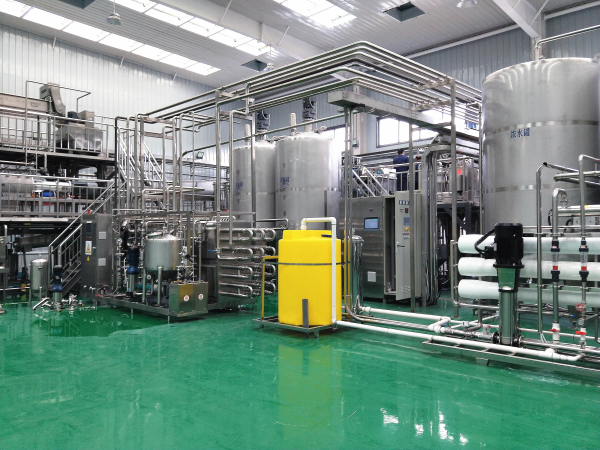Call Us
+86-15800763021
Send Us
Add
775 Chihua Road, Zhelin Town, Fengxian District, Shanghai
- All
- Product Name
- Product Keyword
- Product Model
- Product Summary
- Product Description
- Multi Field Search
Views: 0 Author: Site Editor Publish Time: 2025-01-08 Origin: Site









Jam, a beloved condiment enjoyed around the world, is a fruit preserve made with fruit, sugar, and sometimes pectin. Its production, whether at home or on an industrial scale, involves a series of steps that transform fresh fruit into a spreadable, shelf-stable product. While the specific equipment and scale may differ, the fundamental principles remain the same. This article will explore the jam-making process step by step, from fruit selection to the final packaged product.
1. Fruit Selection and Preparation:
The journey to perfect jam begins with selecting the right fruit. Ripe, but not overripe, fruit is ideal as it contains the optimal balance of sweetness, acidity, and pectin. Overripe fruit can result in a jam that is too soft, while underripe fruit may lack flavor and require additional pectin.
Once selected, the fruit needs to be thoroughly washed and prepared. This may involve stemming, pitting, peeling, or chopping, depending on the type of fruit. For fruits like berries, minimal preparation is needed, while others, like apples or peaches, require more extensive processing.
2. Maceration (Optional):
Maceration is the process of softening the fruit by soaking it in sugar. This step helps draw out the fruit's juices and enhances flavor development. While not strictly necessary for all jams, it can be particularly beneficial for firmer fruits. The fruit and sugar are typically mixed and left to sit for several hours or overnight.
3. Cooking the Jam:
This is the heart of the jam-making process. The prepared fruit, along with sugar and any other ingredients like pectin or lemon juice, is placed in a large pot and cooked. The mixture is brought to a rolling boil, which helps to activate the pectin and thicken the jam. Constant stirring is essential during this stage to prevent scorching and ensure even cooking.
The cooking time varies depending on the type of fruit and the desired consistency. A common method to test for doneness is the "wrinkle test" or "sheet test." A small amount of jam is placed on a chilled plate; if it wrinkles when pushed with a finger or sets into a sheet, the jam is ready. Alternatively, a thermometer can be used to check if the jam has reached the gelling point, typically around 220°F (104°C).
4. Adding Pectin (If Necessary):
Pectin is a natural gelling agent found in varying amounts in different fruits. Some fruits, like apples and citrus fruits, are naturally high in pectin, while others, like strawberries, are low. If the fruit being used is low in pectin, additional pectin may be added to achieve the desired consistency. Pectin can be purchased in powdered or liquid form and should be added according to the manufacturer's instructions.
5. Filling and Sealing:
Once the jam has reached the desired consistency, it's time to fill sterilized jars. The hot jam is carefully ladled into the jars, leaving a small headspace. The rims of the jars are wiped clean, and lids and bands are applied.
6. Processing (For Shelf Stability):
To ensure shelf stability and prevent spoilage, filled jars are typically processed in a boiling water bath or pressure canner. This process heats the jars to a temperature that destroys any microorganisms that could cause spoilage. The processing time varies depending on the jar size and the type of processing method used.
7. Cooling and Storage:
After processing, the jars are removed from the canner and left to cool completely. As the jars cool, the lids should seal, creating a vacuum that helps preserve the jam. Sealed jars can be stored in a cool, dark place for up to a year. Any jars that haven't sealed properly should be refrigerated and consumed within a few weeks.
Industrial Jam Production:
While the basic principles remain the same, industrial jam production involves specialized equipment and larger-scale processes. This includes:
Automated Fruit Handling and Preparation: Machines are used for washing, sorting, peeling, coring, and chopping the fruit.
Large-Scale Cooking Kettles: These kettles allow for the production of large batches of jam.
Automated Filling and Sealing Machines: These machines ensure consistent filling and proper sealing of jars.
Continuous Pasteurization Systems: These systems efficiently heat the jam to destroy microorganisms and ensure shelf stability.
Jam Production Line Solutions:
For those interested in setting up a commercial jam production line, companies like WeiShu Machinery Technology (Shanghai) Co., Ltd. offer turnkey solutions. These solutions encompass all aspects of the production process, from fruit preparation to filling and sealing, and include the necessary equipment, processing technology, and after-sales service. This comprehensive approach simplifies the process of establishing a jam production line and ensures efficient and high-quality production.
For more information on jam production lines and other food processing equipment, visit www.wfoodmachinery.com.